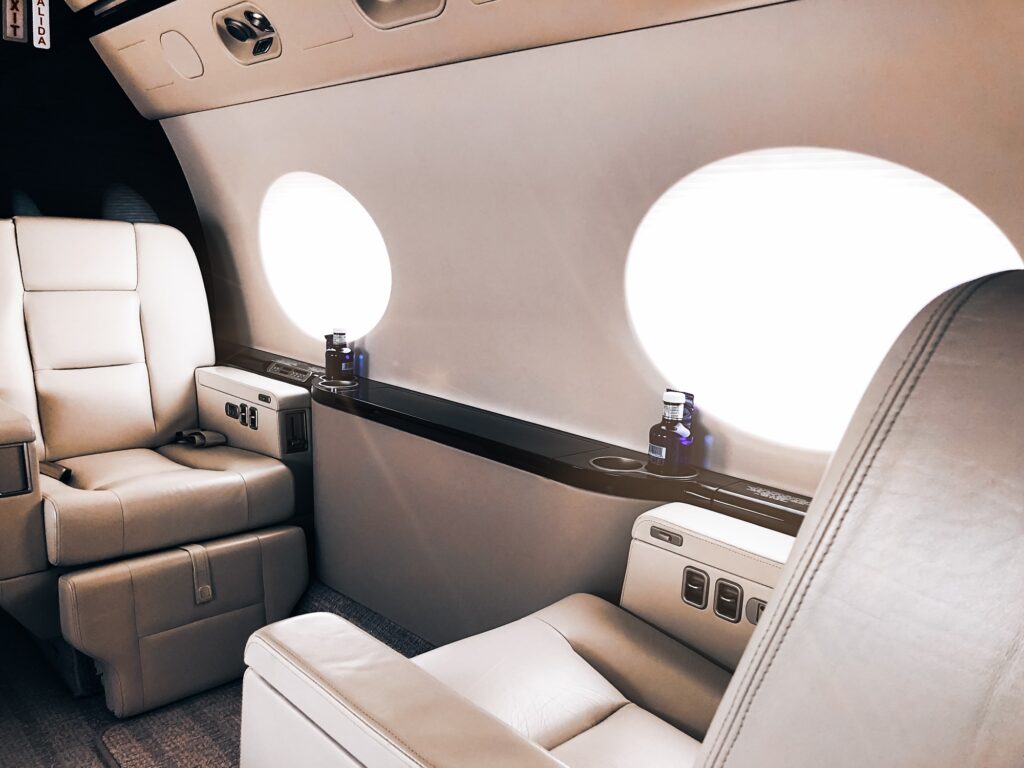
Private jets have long been a symbol of luxury and status, and in recent years, the world of private aviation has seen significant advancements in technology, safety, and convenience. Private jets are becoming more accessible to a wider range of customers, and the industry is evolving to meet the growing demand for private air travel.
In order to really understand the fast pace at which at the private aviation industry really evolves, one has to understand the roots of it first. The private aviation industry was born in the wake of the Second World War. As we all know, the Second World War pushed the limits of many industries and aviation was perhaps the one industry that really found its footing due to the war. Every side in the war needed to be able to gain superiority in the theater of air before a ground battle could even be thought of and thus the Spitfires of the era were born. After the war was over and the dust had settled down, the minds that had been sculpted during the war decided to go towards more commercial pursuits. This is how the aviation industry was born.
Even today, the sheer the thirst to innovate is simply insatiable in the private jet industry, as companies like Gulfstream and Embraer have been spending millions of dollars in order to eek out the smallest of advantages against each other. Usually, those ‘small’ innovations end up making a massive difference in the balance sheets of the giants of aircraft industry.
In the past decade, the real innovation has been in the service sector that is attached to the private jet industry. After the financial crisis of 2007, many players in the market understood that efficiency was the real deal and from this fractional ownership programs have sprouted out. We haven’t yet gotten a ‘flying car 2022’ or a ‘flying car 2023’ that can seriously challenge the hegemony of the big private jet makers but knowing the aviation industry, such a breakthrough innovation could be much closer than we expect it to be. So, now we will explore the latest developments in the world of private jets.

The Rise of Fractional Ownership
Fractional ownership of private jets has become increasingly popular in recent years. Fractional ownership is when several people share ownership of an aircraft and split the cost of operating and maintaining it (here’s a more in-depth article related to fractional ownership) Fractional ownership allows individuals to enjoy the benefits of owning a private jet without the high costs and responsibilities of owning one outright. Companies like NetJets and Flexjet offer fractional ownership programs that allow customers to use private jets on demand.
The Introduction of Supersonic Jets
Supersonic jets have been in development for many years, and recently, several companies have announced plans to introduce them to the market. Supersonic jets are capable of flying faster than the speed of sound, which means that they can reduce flight times significantly. Companies like Aerion and Boom Supersonic are developing supersonic jets that they hope will revolutionize the world of private aviation.
Increased Safety Measures
Safety is always a top priority in the aviation industry, and private aviation is no exception. In recent years, the industry has seen several advancements in safety measures. One example is the development of Automatic Dependent Surveillance-Broadcast (ADS-B) technology, which allows air traffic controllers to track aircraft in real-time. This technology has been mandated by the FAA and is now a requirement for all private aircraft in the US.
The Use of Sustainable Aviation Fuels
The aviation industry has been under pressure to reduce its carbon footprint, and private aviation is no exception. In recent years, the use of sustainable aviation fuels (SAFs) has become more prevalent in the private aviation industry. SAFs are made from renewable resources and can reduce greenhouse gas emissions by up to 80%. Companies like Jet Linx and VistaJet have already started using SAFs in their aircraft, and more are expected to follow suit in the coming years.
The Development of Electric Aircraft
Electric aircraft have been in development for many years, and recently, several companies have announced plans to introduce them to the market. Electric aircraft are powered by electric motors and batteries, which means that they produce zero emissions. Companies like Eviation and Ampaire are developing electric aircraft that they hope will revolutionize the world of private aviation.

The Use of Artificial Intelligence
Artificial intelligence (AI) is becoming more prevalent in the aviation industry, and private aviation is no exception. AI is being used to optimize flight routes, predict maintenance needs, and improve passenger experiences. Companies like JetSmarter and PrivateFly are using AI to improve their services and provide customers with more personalized experiences.
The Growth of Private Jet Charter Brokers
Private jet charter brokers act as intermediaries between customers and private jet operators. They help customers find the right aircraft for their needs and negotiate the best prices. In recent years, the number of private jet charter brokers has grown significantly, and many offer innovative services that make private air travel more accessible to a wider range of customers.
The Introduction of New Aircraft Models
Private jet manufacturers are constantly introducing new aircraft models that offer improved performance, comfort, and convenience. Companies like Gulfstream, Bombardier, and Embraer are all introducing new models that offer advanced features like larger cabins, longer ranges, and faster speeds.
The Growth of Private Jet Membership Programs
Private jet membership programs have become increasingly popular in recent years. These programs offer customers access to private jets on demand, without the high costs of ownership. Companies likeVistaJet, Wheels Up, and JetSuite offer private jet membership programs that allow customers to pay for a set number of hours of private jet use per year.
The Use of Private Jet Terminals
Private jet terminals, also known as Fixed-Base Operators (FBOs), are becoming more prevalent in the world of private aviation. These terminals offer private jet customers exclusive access to luxurious lounges, private security screenings, and personalized services. Many airports around the world now have private jet terminals, making private air travel more convenient and seamless for customers.
The Adoption of Blockchain Technology
Blockchain technology has the potential to revolutionize the private aviation industry by improving transparency, security, and efficiency. Companies like TapJets and JetToken are using blockchain technology to create secure and efficient platforms for private jet booking and ownership.
The Growth of Private Jet Sharing
Private jet sharing, also known as empty leg flights, is becoming more popular in the private aviation industry. Empty leg flights occur when a private jet is flying to its destination without any passengers onboard. Private jet operators can offer these flights at a discounted rate to customers who are willing to be flexible with their travel schedules.
The Use of Virtual Reality Technology
Virtual reality (VR) technology is being used in the private aviation industry to provide customers with immersive experiences before they book a private jet. Companies like JetSmarter and VistaJet are using VR to give customers a virtual tour of their private jet cabins, allowing them to experience the luxury and comfort of private air travel before they book their flights.
The Growth of Private Jet Finance
Private jet finance is becoming more prevalent in the private aviation industry. Many private jet manufacturers and brokers now offer financing options for customers who want to purchase a private jet but cannot afford to pay for it outright. These financing options make private air travel more accessible to a wider range of customers.
The Expansion of Private Jet Markets
Private air travel is no longer limited to the traditional markets of North America and Europe. In recent years, private aviation has expanded to new markets in Asia, the Middle East, and Africa. Private jet operators are expanding their services to meet the growing demand for private air travel in these regions, offering customers access to luxurious and convenient private air travel around the world.
In conclusion, the world of private aviation is evolving rapidly, with new advancements in technology, safety, and convenience. Private air travel is becoming more accessible to a wider range of customers, and the industry is expanding to new markets around the world. Whether you are a business executive, a celebrity, or a luxury traveler, private air travel offers unparalleled comfort, convenience, and luxury, and the latest developments in the world of private jets are making it easier than ever to experience.


No Comments